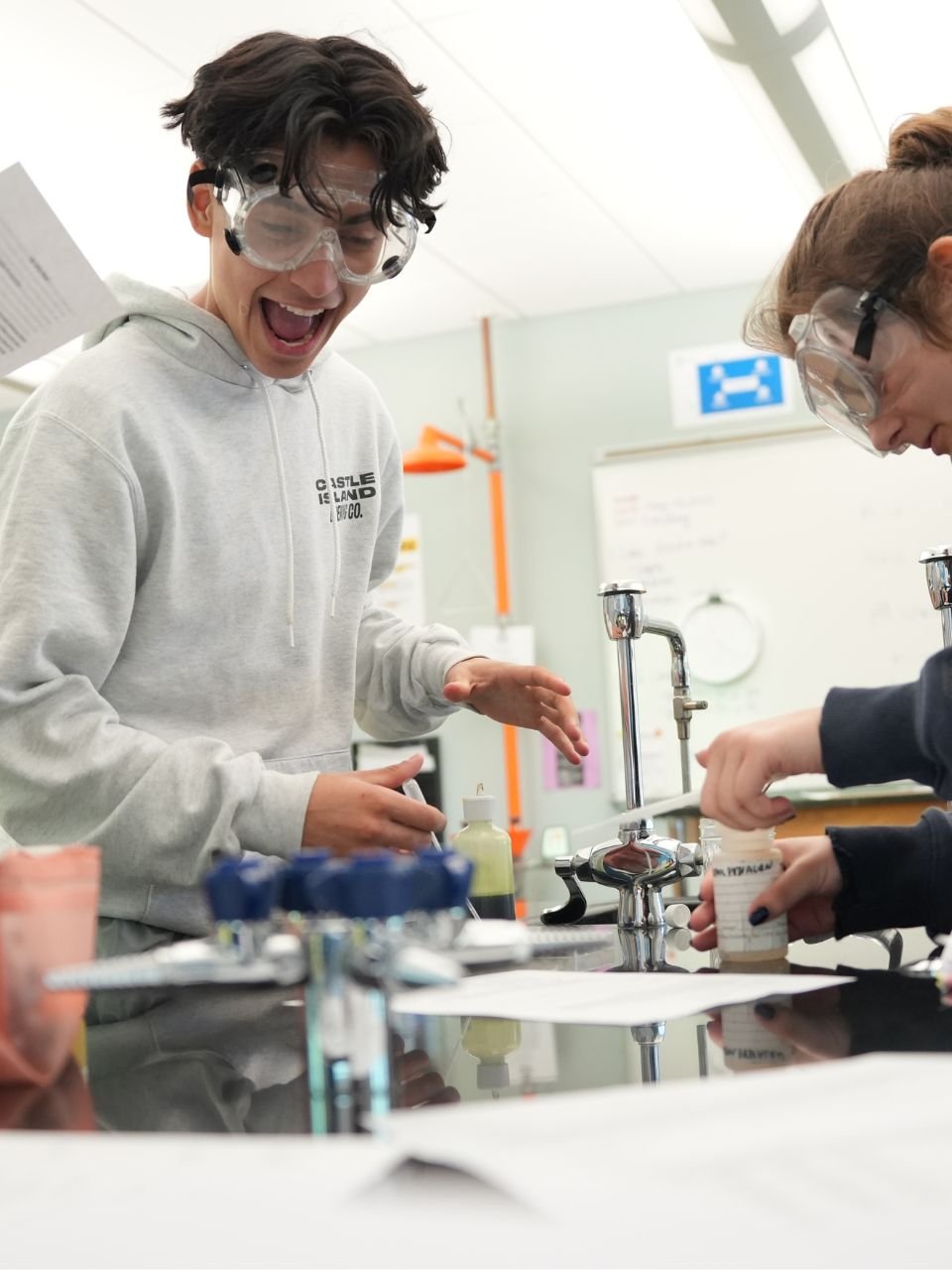- Our School
- Our Advantage
- Admission
- Elementary•Middle School
- High School
- Summer
- Giving
- Parent Resources
- For Educators
- Alumni
« Back
Being an Efficient Homework Helper—Part I: Turning a Chore into a Challenge
September 18th, 2019

By Regina G. Richards
This is the first installment of a multi-part series about helping children manage homework. Thesecond post covers strategies, organization, and dealing with fatigue, and the thirdmotivation and tools. This article originally appeared in LDOnline.
"The secret of education lies in respecting the pupil."
— Ralph Waldo Emerson (1803–1882, U.S. poet, essayist and lecturer)
Homework is a constant for most children — it is always there. And for many children, it is often a chore. Just the concept of "homework" can cause multiple anxieties and negative feelings. To assist parents and students, this series of articles presents some tools to help turn this chore into an enjoyable challenge. It focuses on some general preliminaries, basic strategies, and motivation.
To begin, we must keep in mind the characteristics of our own children, because each child has his or her unique strengths, weaknesses, and needs.
When embarking on any project, there are first some questions we need to ask ourselves. These apply whether the project is a page of math facts or a full report.
- We need to make sure we understand the project: what is the child trying to do?
- We need to assemble our tools: what materials will be needed for this project?
Working successfully with our children on schoolwork requires respect, and respect begins with understanding. If a child struggles with and/or resists homework, ask yourself, "Why?" As you discover the reasons, share them with your child so he or she better understands the issues. Doing so takes the mystery out of struggles or frustrations. Pediatrician Mel Levine calls this "demystification," which he describes as eliminating mystery by explaining the child's strengths and weaknesses and guiding them to develop more accurate personal insight.
"Working successfully with our children on schoolwork requires respect, and respect begins with understanding."
Students may struggle with and/or resist homework for a variety of reasons. These may include any of the following:
- Your child is experiencing some aspect of a learning disability or learning difference.
- Your child is inefficient in a skill needed to establish a solid foundation related to the concept and/or task.
- Your child struggles to process one or more components of the task.
- Your child lacks or is not using the appropriate strategies or tools.
- Your child is experiencing fatigue, either processing fatigue or general fatigue.
As parents, we should attend to how our student approaches the task. Help them identify and sort through the different components and determine the needed sub-steps. You can delineate these using a concrete chart or graphic organizer.
Many students express the idea that homework is "stupid" or a "waste of time." Even if you do wonder about the value of the given task, it is critical to communicate an optimistic belief that homework positively affects achievement in school and teaches many valuable skills critical for success throughout life. For example:
- Following directions
- Independent work habits
- Time management
- Use of strategies
- Follow-through
- Responsibility
Keep in mind that you and your child are laying an important foundation that will guide their routines for years to come. Starting in early elementary school years, each child begins to establish habits for time management and task completion.
Preliminaries
Location
Establishing a consistent workspace is a critical beginning. The precise location for doing homework does not matter as long as it is free from distractions. For example, trying to read a chapter in the middle of the kitchen while a parent makes dinner and siblings run in and out creates a recipe for failure. In the early grades, you and your child should select the homework location together, identifying a place where you can be close by and available for help. As the child matures, she can be more independent in selecting his own workspace.
"Establishing a consistent workspace is a critical beginning. The precise location for doing homework does not matter as long as it is free from distractions. "
Supplies
At the beginning of each school year, help your child create his own Homework Survival Kit with the necessary supplies. If the child receives accommodations for learning disabilities at school — such as a particular pencil grip, a type of paper, or an electronic speller — try to allow their use at home too. Children should learn to take care of the supplies in their Homework Survival Kit, therefore sharing is not advisable. Your child, even at age five, should have a large calendar with enough space to note assignments. This is a critical habit that students will need to use through high school and college.
Lighting and posture
Use of an appropriate writing posture should be encouraged. Therefore, a desk and chair of appropriate size are necessary. The desk should have adequate lighting. Some children enjoy reading in a different position, such as in a beanbag chair. Ensure that there is also adequate lighting by that location.
General environment
Keeping in mind that each student may have different needs and preferences, following are some ideas to help students enhance their ability to focus while doing homework:
- Quiet or soft background music
- Silence
- Small crunchy snacks, sour candy, or chewing gum
- Carbonated beverages (preferably without sugar)
Author
Regina G. Richards, MA, is a board certified educational therapist and former director of Big Springs School, specializing in multidisciplinary programs for language learning disabilities. She teaches regularly at University of California Riverside Extension. She’s written several books, among them The Source for Dyslexia & Dysgraphia; The Source for Learning & Memory; Eli, The Boy Who Hated To Write; LEARN – Learning Efficiently and Remembering mNemonics, Visual Skills Appraisal2; and Classroom Visual Activities2. She is active in her local IDA branch, is a past president, and is the parent of an adult son who experiences dyslexia and dysgraphia and is currently successful in business, working with computers.
Posted in the category Learning.























